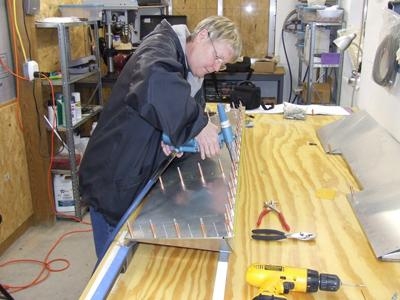Wed, Nov 12, 2014
Building Your Own Aircraft Can Be Challenging And Rewarding, But You Need To Understand The 51% Rule Before Starting
To get an amateur built aircraft approved by the FAA, the regulations require you build the “major portion” of the aircraft. This is what is commonly referred to as the “51% rule.” Complying with this rule can become complicated but let’s take a brief look at the intent of the rule.

When the FAA came up with the regulations for issuing airworthiness certificates to amateur-built aircraft they based their approval on the presumption that builders constructed their aircraft, “solely for their own education or recreation.” In other words, building your own aircraft has to be based on being a hobby, not a profession.
If you’re thinking about building a kit-produced aircraft, the kit manufacturer has the option to have their kit be evaluated by the FAA and listed as an approved 51% kit. This is a great service to the homebuilder. However, manufacturers are not required to do this. If the kit manufacturer is not listed on the FAA 51% list, it does not necessarily mean that the kit does not qualify. Ultimately, it’s up to the builder to prove to the FAA that they are in compliance with the majority-portion rule.
Things can get a little wormy if you’re buying a partially completed project from someone else or if any components of the project come from an FAA type-certificated aircraft. In situations like these it’s important to get advice prior to getting involved. Another area to watch out for is hiring professional help to complete the project. This can be done, but once again, the devil’s in the details.
It’s almost impossible to impress the importance of understanding how the system works before getting involved in aircraft home building. Sometimes taking quick action on a “good deal” can turn into a nightmare. EAA and the FAA have a good working relationship to help keep aircraft home building legal and safe. Resources are out there for learning the rules of aircraft homebuilding; be sure to use them.
(Image from file)
More News
From 2023 (YouTube Version): Legacy of a Titan Robert (Bob) Anderson Hoover was a fighter pilot, test pilot, flight instructor, and air show superstar. More so, Bob Hoover was an i>[...]
Get The Latest in Aviation News NOW on Instagram Are you on Instagram yet? It's been around for a few years, quietly picking up traction mostly thanks to everybody's new obsession >[...]
Aero Linx: B-52H Stratofortress The B-52H Stratofortress is a long-range, heavy bomber that can perform a variety of missions. The bomber is capable of flying at high subsonic spee>[...]
Altimeter Setting The barometric pressure reading used to adjust a pressure altimeter for variations in existing atmospheric pressure or to the standard altimeter setting (29.92).>[...]
"Knowing that we play an active part in bettering people's lives is extremely rewarding. My team and I are very thankful for the opportunity to be here and to help in any way we ca>[...]
 Classic Aero-TV: Remembering Bob Hoover
Classic Aero-TV: Remembering Bob Hoover ANN FAQ: Follow Us On Instagram!
ANN FAQ: Follow Us On Instagram! ANN's Daily Aero-Linx (05.15.24)
ANN's Daily Aero-Linx (05.15.24) ANN's Daily Aero-Term (05.15.24):Altimeter Setting
ANN's Daily Aero-Term (05.15.24):Altimeter Setting Aero-News: Quote of the Day (05.16.24)
Aero-News: Quote of the Day (05.16.24)



